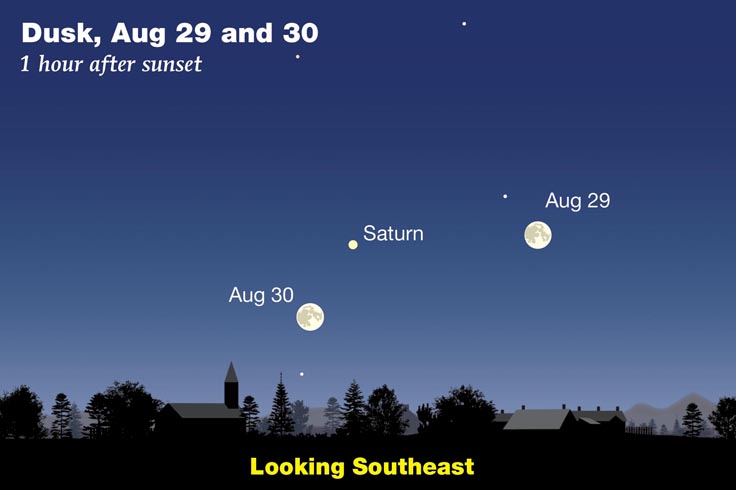Many skywatchers look forward to seeing the Perseid meteors every August, and this month’s Sky Tour episode why they’ll be especially good this year. You’ll also learn what’s so special about the full Moon that falls on the night of August 30–31.

Listen Here:
Podcast: Play in new window | Download
Subscribe: Apple Podcasts | Google Podcasts | Spotify | Email | RSS | More
A lot of stargazers can’t imagine “August” without thinking of the annual Perseid meteor shower. Mid-August is when you’ll see many more “shooting stars” than usual. The Perseids have a fairly sharp peak, which this year is forecast for the predawn hours of Sunday, August 13th. But you can start looking fairly soon after sunset on Saturday, the 12th, once the constellation of Perseus rises over the northeastern horizon. There’ll be no moonlight to spoil the view, so the timing for this year’s display is about as good as it gets.
And this month you’ll get to enjoy two full Moons. The first comes on August 1st. Native Americans knew this as the full Sturgeon Moon, because during August it was easiest to catch this large fish, which was plentiful in the Great Lakes, Lake Champlain, and other major bodies of water. Some tribes knew it as the full Red Moon, due to its ruddy appearance as it rose in hazy summer skies, or the Green Corn Moon.
Fast forward 29½ days, the length of a lunar cycle, to the night of August 30–31. That’s when the Moon will be full again, for the second time this month. This quirky calendrical event has come to be called a Blue Moon — but it wasn’t always so! Download this month’s Sky Tour podcast for the inside story.

Saturn makes its debut in the evening sky late this month. On the 26th, it reaches what’s called opposition, because it appears opposite the Sun in the sky. As the Sun sets, Saturn rises, and vice versa. Watch for it low in the east as evening twilight deepens. That “blue” Moon will be close by, just 5° away, on the night of the 30th. Week by week, Saturn will climb higher in the sky at dusk. And if you stay out long enough, until around midnight, you’ll also be able to enjoy even brighter Jupiter rising as well, roughly in the same spot along the eastern horizon where Saturn had been earlier in the evening.
August is a great month for stargazing. For example, turn toward south soon after nightfall, and look for a fairly bright star not far above the southern horizon. That’s Antares. And do you know what Antares and the Moon have in common this month? To find out, check out this month’s podcast.
Antares marks the heart of Scorpius, whose head is marked by a vertical arc of three medium-bright stars a little to the right. In the Northern Hemisphere, the closer you live to the equator the higher up you’ll see the Scorpion in the sky.
Now shift your gaze to the left of Antares by about three fists. You’re looking for a group of eight medium-bright stars in the shape of a teapot. The handle is on the left and the spout, tipped down a bit, is on the right. Got it? The whole thing is about the size of your fist.
To find out which constellation includes the Teapot — and for lots of great tips on what else to see this month in the evening sky — download or stream August’s Sky Tour astronomy podcast. It’s just 13 minutes long — perfect for a quick introduction to the celestial happenings this month.
 0
0
Comments
You must be logged in to post a comment.